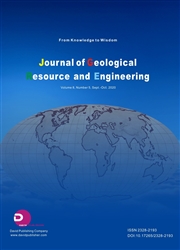Water Demand Management Is a Must in MENA Countries…But Is It Enough?
作者:Wael Mualla
摘要:The majority of Middle East and North Africa(MENA)countries suffer from chronic imbalance between available water supply and rising water demand.This imbalance is expected to worsen even further in the future as a result of sharp population growth,rapid economic development and climate change,unless major positive measures are implemented to augment water supply and manage water demand.The supply management approach,on its own,practiced by many countries in the region for so many years has so far demonstrated its inability to bridge the“water gap”between available water resources and rising water demand,as most traditional water resourced in almost all MENA countries have been exploited(or over exploited),and the cost of non-traditional water resources has become increasingly prohibitively high,apart from its environmental impact.Demand management is regarded by many water experts in the region as the answer or“panacea”for the water imbalance problem.But,is demand management approach alone able to solve the problem of water scarcity in the MENA region?In other words,if all demand management measures have been fully implemented,would there still be gaps between supply and demand that need to be filled with supply augmentation,andwill supply management options still need to be part of the solution?This paper tries to answer this question by reviewing several works in this domain,particularly,recent studies by the World Bank[9-11].It was concluded that,although water demand management measures should be given the first priority,especially,in the agricultural sector where it has the maximum impact,demand management on its own will not be able to bridge the“water gap”,and supply management options,such as sea water desalination and the re-use of treated wastewater,will be part of the solution.
发文机构:The Department of Civil Engineering
关键词:MENACOUNTRIESdemandmanagementWATERSCARCITYWATERgap
分类号: TP336[自动化与计算机技术—计算机系统结构][自动化与计算机技术—计算机科学与技术]
- Geochemical Assessment for Morendat East Geothermal Prospect, Using Radon and Carbondioxide Concentration from Soil, Kenya
- Impact of the Iron Gates on the Sediments with an Emphasis on the Area of the Future Belene Nuclear Power Plant
- Impact of the landslide for a Relationship between Rainfall Condition and Land Cover in North Vietnam
- Landslide Vulnerable Zones Based on Engineering Geological Assessment, Case Study: Wonotopo Area, Gebang District, Purworejo Regency, Central Java, Indonesia
- Extension of Giurgiu Port on Lower Danube
- A Two-step Sequential Extraction for Analyzing Hardly Accessible Precious Metals in Sulfide Ore-bearing Sedimentary Rocks
- Microzoning Study for Seismic Risk Reduction in the Areas Covered Soft Soil Deposit, Japan
- Contemporary Condition of the Irrigative Soils in Mugan-Salyan Massif
- Geotourism Development in Post-mining Area
- Technical and Economic Aspects and Experience from 6 Years of Operating the Technology Using the Waste Heat from the Exhaust Gases of Heat Sources and 3 Years of Operating a Heating Plant in an Autonomous, Island Regime


